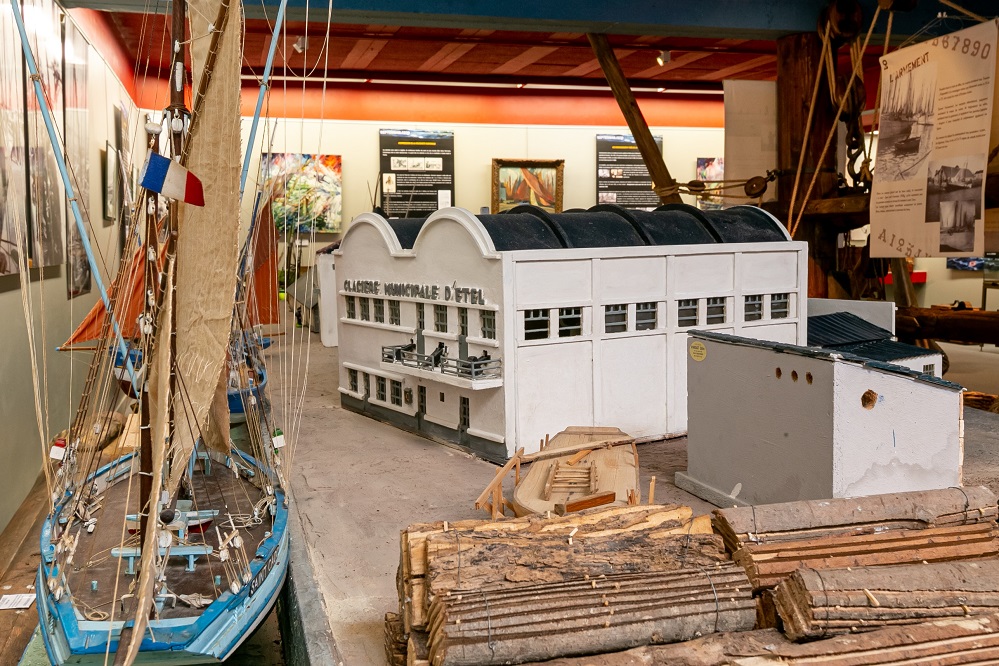
Although Etel is nowadays a popular marina for yachtsmen, its history is marked by its past as a tuna fishing port. Up to 250 dundees, the famous sailing tuna boats, supplied the many canneries in the region.
You are looking at a majestic model of the harbour during this glorious period.
Located on the left bank of the Etel river, the port is made up of a main basin to the north, with its mole to the west. To the south, the wharves of the fish market and the ice house extend as far as the lifeboat station. On the medians behind the quays one finds successively: the fish market (1957), the old auction (1888), the maritime cooperative, the municipal ice house (1946) with, on either side, the huts of the fishmongers, and the lifeboat shelter (1962).
In front of you stands the reproduction of the last ice house in Brittany, a maritime heritage emblematic of the region. Up to 70 tons of ice were made here every day, to preserve the tuna in the boats. Now disused, the building with its typical maritime architectural aspect reminds us of the port history of the commune and of Etel.
As a reminder
From the second half of the 19th century onwards, the port of Etel was won over by the expansion of the fishing and canning industries and continued to develop. A first breakwater protecting a basin was planned at the end of the 1850s. This basin was enlarged in 1887 and a municipal fish market was built on new platforms in 1888.
In the 20th century, port developments took shape with the construction of other quays to the south and in line with those of the fish market. After the Second World War, the development of inshore fishing, which replaced tuna fishing, led to the construction of appropriate infrastructures such as the ice house in 1946 and the new fish market in 1957.
From the 1970s onwards, with the decline of fishing in Etel, there was a conversion to tourism. The harbour basin is now equipped with pontoons for pleasure boats.